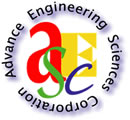| |
 |
|
Delivering Advanced Engineering Solutions |
|
|
|
|
|
|
|
|
As part of a comprehensive risk management approach AESC offers a leading edge probabilistic base root cause analysis methodology that has proven successful in identifying root causes for safety risk as well as accidents.
Typically when accident cause is discussed, the simplistic approach looks for a component failure, or the hunt goes on for a single point of failure.
However, modern designs are much more sophisticated than that, and require a systematic and scientific approach to isolate the cause.
And our experience has shown that typically an accident cause is a result of combination events that occur on a particular time frame or place.
Understanding and consideration of all dimensions of a cause has proven invaluable in isolation of the root cause.
Utilizing FMECA and fault tree, we consider all negative interactions that are involved in an accident-causing mechanism.
We classify interactions into four broad but simple categories, of why, how, when, and where. The why category focuses on causes of failures, the how category focuses on behavioral aspects, when category focuses on the time frame of the failure, and the where category focuses on the places where the failures occur.
We further detail the above categories as follows:
| Why |
How |
| Mechanical, functional, and/or interface failures |
Random, wear out, and initial failures |
| Primary, secondary, and/or command failures |
Demand and run failures |
| Basic and intermediary failures |
Persistent and intermittent failures |
| Parallel and cascade failures |
Active and dormant failures |
| Direct, indirect, and root causes |
Exclusion errors |
| Main cause and supplemental causes |
Independent and dependent failures |
| When |
Where |
| Recovery failure |
Internal and external events |
| Initiating and enabling events |
Active and passive failures |
| Routine and cognitive errors |
Transient failures |
| Lapse, slip, and mistake |
|
|
The above categories allow us to construct a matrix that acts as checklist and a vehicle to isolate the root cause of a hazard and any associated circumstances.
|
|
|
|
|
|
|
|